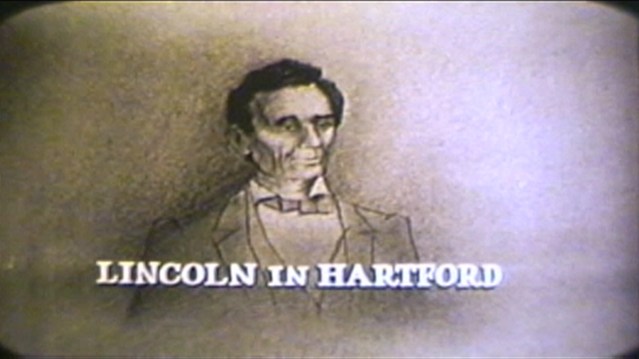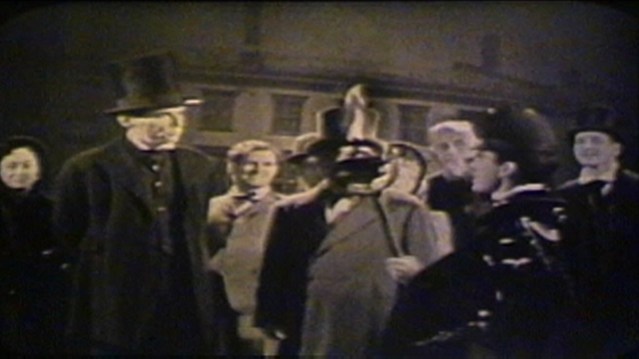It’s Lincoln’s birthday. Did you know Abraham Lincoln came to Hartford once, in a well documented trip?
Of course, there is no film of the actual visit, but Lincoln’s trip was recreated in a documentary Channel 3 produced to commemorate the 100th anniversary of Lincoln’s visit in March of 1860. We hired actors to play Lincoln, Gideon Welles of Glastonbury who later was appointed Secretary of the Navy under President Lincoln, Hartford Mayor Timothy Allyn and others.
This was no Ben Hur production, but wasn’t bad for something shot in our television studio. It is well researched and as far as I can tell, historically accurate.
It is narrated by Dick Bertel, the former Channel 3 newsman. The documentary, “Lincoln in Hartford” ran 30 minutes. It’s fascinating. The background sets show Union Station, City Hall, and a drug store on Asylum as they appeared in 1860.
You can watch the entire documentary, “Lincoln in Hartford” right here:
Read more about Lincoln’s visit to Hartford in this article in the Hog River Journal http://connecticutexplored.org/issues/v03n04/lincolns_brilliance.htm
Categories: History, Uncategorized






A little misleading video. The video gave the impression that Lincoln was going to go out and kill the snake (slavery) In reality, Lincoln was not an abolitionist. He was against slavery spreading into free states. Since there was no real threat of slavery spreading to the free states, he was taking a pretty meaningless position. His position was basically leave well enough alone.
2nd to last sentence in the speech, he states “Wrong as we think it, we can afford to let it alone where it of necessity now exists; but we cannot afford to extend it into free territory and around our own homes. Let us stand against it!”
Lincoln never took a stronger position until after the war started.
LikeLike
Hi Frank, Thanks for your comments. Here is the official word from the Lincoln Library in Springfield, IL.
Lincoln was concerned to keep slavery from spreading to the free (or not-yet-slave) TERRITORIES, not states. The right to control those areas, by Congress or by localities, was indefinite, as Lincoln put it three times in his First Inaugural Address, “The Constitution does not expressly say,” but his and others’ research on related matters, and the intentions of the Framers, was that CONGRESS should have that power to block slavery in the territories, including the Dist. of Columbia.
This was the ‘bargain’ used in the compromises of 1820 and 1850; when the Kansas-Nebraska Bill passed Congress in 1854, Lincoln got back in to politics specifically to try to get that law overturned.
The other key point, correct historically and legally again: in his First Inaugural, he stated that he had “no power, and no intention” of interfering with slavery as it existed under state constitutions. And he did not. But when a rebellion / invasion began on 12 April 1861, of course, the president’s powers changed, though he had to be persuaded of the legality of that new power (not exactly spelled out in the Constitution, but pretty close) to act as Commander in Chief to do what was necessary to save the Union.
His vision had ALWAYS included the dual nature of the situation: to end slavery WAS to save the Union, to make the Union what it was meant to be in 1776 but which the Framers in 1787 could not fix. They left it for another generation to fix. Lincoln and 2.2 mn. men in Union uniforms (about 10% of them black) fixed it.
LikeLike
Thanks for response.
LikeLike